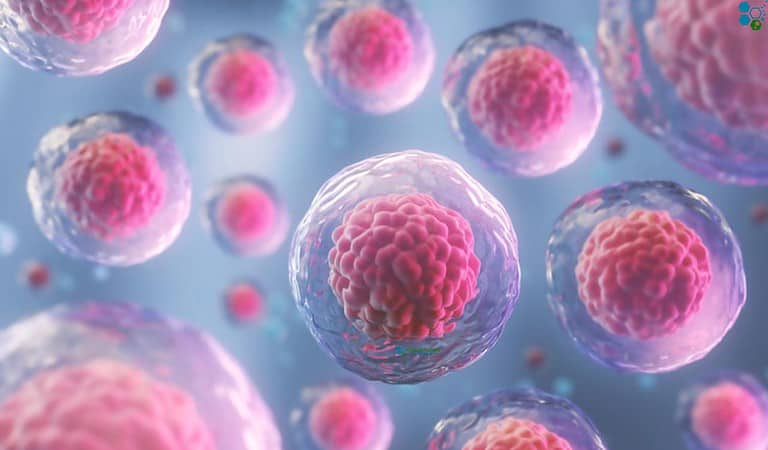
Undifferentiated cells refers to a cell that has yet to develop into a particular cell variant. Undifferentiated stem cells are the very basic cells in biology that all other cells derive from. The very first few cells in an embryo are considered undifferentiated.[1]
Stem cells are basically undifferentiated cells that have the unique ability to produce many different types of cell lines. By the very definition large undifferentiated carcinoma cells lack either glandular or squamous differentiation.[2]
The term is the opposite of differentiated cells and is usually used to help describe tissue or cells that have not used paracrine cell signalling to become specialized into a particular function or structures as adult stem cells. Undifferentiated cancer cells are dangerous and often grow and spread quickly.[3]
Undifferentiated cells, often referred to as stem cells, hold a unique position in the hierarchy of cellular development. Unlike specialized cells that perform specific functions, undifferentiated cells have the potential to develop into various types of cells. This feature makes them indispensable in both natural developmental processes and artificial interventions like regenerative medicine.
Undifferentiated cells play a fundamental role in development, tissue maintenance, and treatment of conditions such as type 1 diabetes and renal failure. Understanding their properties and how to control their differentiation pathways will be critical for advancing medical science and healthcare.
[1] ^ Hu, Kexiang, Feihu Zhao, and Qingkang Wang. 2013. Mechanical characterization of living and dead undifferentiated human adipose-derived stem cells by using atomic force microscopy. Proceedings of the Institution of Mechanical Engineers. Part H, Journal of engineering in medicine, no. 12 (September 17). doi:10.1177/0954411913503064. https://www.ncbi.nlm.nih.gov/pubmed/24044923
[2] ^ Louthrenoo, W, S Boonyaratavej, R Sittiwangkul, and W Sukitawut. 1998. Anti Ro/SSA positive undifferentiated connective tissue disease in a mother with a newborn with complete congenital heart block: a case report. Journal of the Medical Association of Thailand = Chotmaihet thangphaet, no. 8. https://www.ncbi.nlm.nih.gov/pubmed/9737117
[3] ^ Watthanaworawit, Wanitda, Paul Turner, Claudia Turner, Ampai Tanganuchitcharnchai, Allen L Richards, Kevin M Bourzac, Stuart D Blacksell, and François Nosten. 2013. A prospective evaluation of real-time PCR assays for the detection of Orientia tsutsugamushi and Rickettsia spp. for early diagnosis of rickettsial infections during the acute phase of undifferentiated febrile illness. The American journal of tropical medicine and hygiene, no. 2 (June 3). doi:10.4269/ajtmh.12-0600. https://www.ncbi.nlm.nih.gov/pubmed/23732256.
If you've seen people take ice baths or cold showers and wondered if they're onto… Read More
Immunomodulation stands at the forefront of biomedical research, steering the immune system's ability to fight… Read More
Stem cell research leads the charge in medical innovation, heralding revolutionary advances in regenerative medicine.… Read More
The blood-brain barrier (BBB) is a crucial shield for the brain, regulating the entry of… Read More
While peptide bonds are fundamental to protein structure, their direct relationship with stem cells lies… Read More
When discussing cutting-edge cancer treatments, NK cell therapy stands out due to its unique approach… Read More